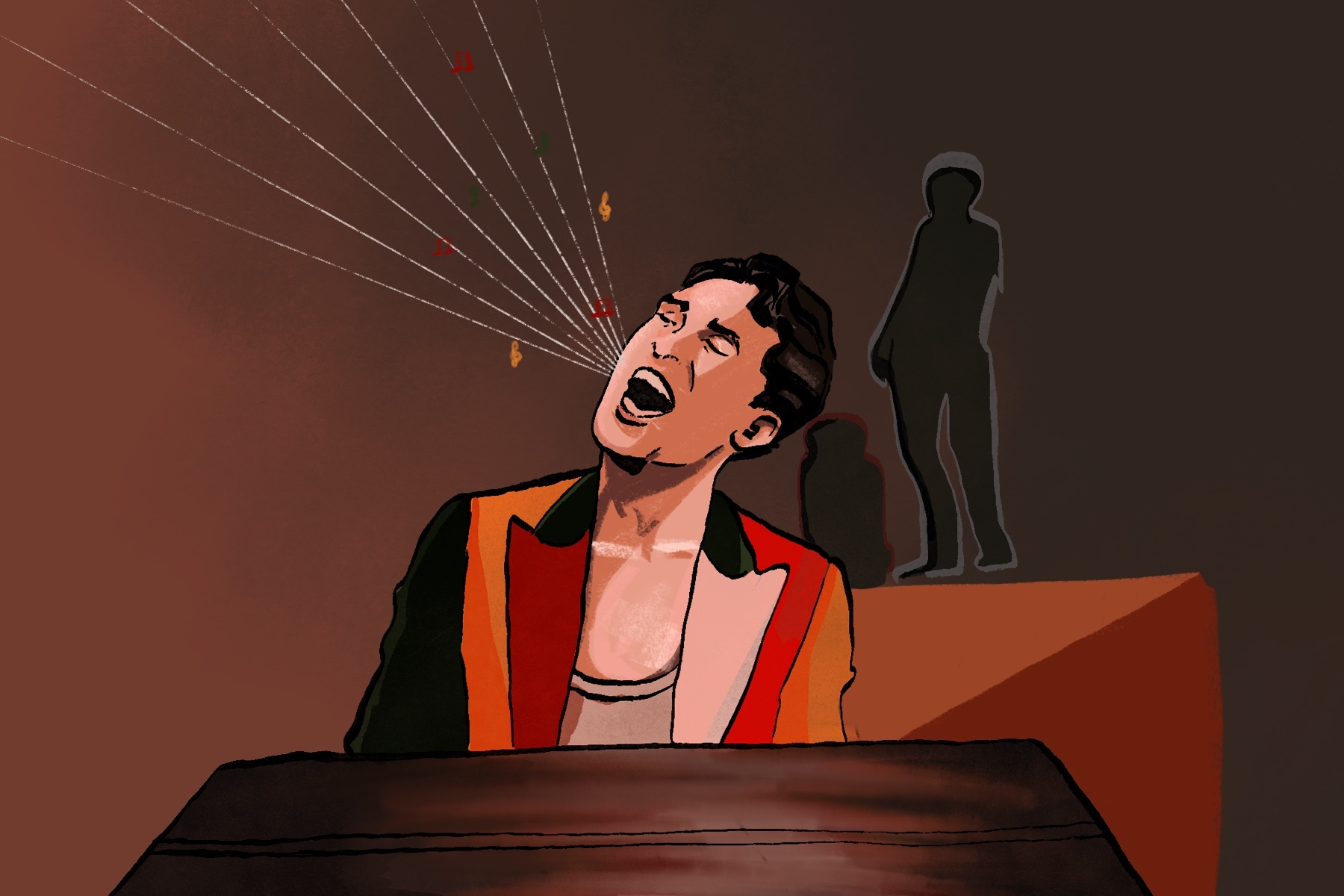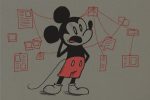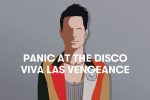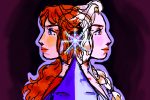“Things have changed for me, and that’s okay / I feel the same,” Brendon Urie sings in “That Green Gentleman” from Panic! at the Disco’s second album, “Pretty. Odd.” (2008). Between then and his upcoming album “Viva Las Vengeance,” Urie and his band have gone through quite a lot of changes. Band members came and went, including Ryan Ross and Dallon Weekes, until Panic! at the Disco finally became Urie’s solo project. At the same time, his albums have become progressively more popular. His last album, “Pray for the Wicked” (2018), features the pop hits “High Hopes” and “Hey Look Ma, I Made It.” The next year, he sang a version of “Into the Unknown” for Disney’s “Frozen 2” (2019) and stepped fully into the world of pastels and pop alongside Taylor Swift for “ME!” on her album “Lover” (2019).
Four years after “Pray for the Wicked,” Brendon is back. Following a cryptic website tease and billboards displaying the singer on fire, Urie unveiled his next era. On June 1, he announced his new album, “Viva Las Vengeance,” and released the title track. The title is a more sinister twist on the phrase “Viva Las Vegas,” which references the city where Urie grew up and the subject of his song “Vegas Lights.” It’s completely in line with his previous albums, like “Vices & Virtues” (2011), “Too Weird To Live, Too Rare To Die!” (2013), “Death of a Bachelor” (2016), and the aforementioned “Pray for the Wicked” — with a title that is perhaps more villainous than that of the still unusual debut album “A Fever You Can’t Sweat Out” (2006) and folksy sophomore album “Pretty. Odd.” (whose oddest feature is arguably the lack of punctuation in the band’s name during that era, not the quirky album itself).
Based on its track list, “Viva Las Vengeance” promises a characteristic mix of lively hits and slower sad beats. From songs like “Local God” and “Star Spangled Banger” to “Sad Clown” and “All By Yourself,” the album hints at a downward spiral culminating, fittingly, in “Do It To Death.” This aligns in part with statements by Urie describing the album as a “look back at who I was 17 years ago and who I am now with the fondness I didn’t have before” and “an introspective look into his relationship with his decade-plus career including growing up in Las Vegas, love, and fame.”
It also recalls his past music, especially songs like “Hey Look Ma, I Made It” and “Dying in LA” from “Pray for the Wicked.” Given the album’s retrospective nature, it will probably also reflect early hits like “I Write Sins Not Tragedies.” Based on the titles, it might even reflect the cult-like eeriness and untamed power of “Death of a Bachelor” era songs like “LA Devotee” and “Emperor’s New Clothes.”
Predictions aside, the only song that has been released as of now is the eponymous “Viva Las Vengeance.” It evokes the chaotic energy one would expect from an alt-pop cross encompassing both the wildness of Vegas and roguish revenge. Its instrumentals blend the polished feel of “Death of a Bachelor” and “Pray for the Wicked” with the grittier alt-rock guitars and drums of “A Fever You Can’t Sweat Out” and “Vices & Virtues.” A person could be forgiven for thinking Urie picked his backing instruments by randomly raiding his past eras.
Richly textured with allusions, the lyrics reference earlier periods in Urie’s life. Despite Urie’s statement that the album would reflect his fondness for his younger years, this song does not contain that sentiment. Instead, most times, “Viva Las Vengeance” leans on ideas of victimization, like Urie crying out “stole my favorite song / yes, it really hurt” or “hacking at my feed, act like you are me.”
Beyond this, the lyrics also craft striking and sometimes unusual imagery like “plugged on a power strip,” “fell on every sword / Yes, Excalibur,” and “on a sofa with Sativa.” While many of these lines are frontloaded into the fast-paced first few verses, they still appear toward the end with lines like “giving up the key to paint a masterpiece.” Much of their effect comes less from the words and more from Urie’s passionate delivery. All the right syllables ring out with a breadth of emotion matched only by Urie’s wide vocal range. He cheers and hollers, holding notes for an impactful length. He wavers and hurts.
However, for such a vibrant song, the lyrics ring strangely hollow at times. From the start, Urie belts out “I’m already dead” and “I’m so out of it” with the same fervor as lines like “I just wanna be free” and “livin’ the dream.” As the song progresses, the incongruously empty lyrics grow more extensive, like “Nothing’s really real, no one really feels, nothing to declare.” Near the end of the song, Urie builds up to the climactic line, “Stuck here in the weeds on a road that leads to nowhere.” Rather than quickly backing down like before, he repeats “to nowhere” with growing desperation, mirrored in the music video as he drags himself across a stage.
So close to the end of the song, the music fades out to near silence, punctuated by little more than a few muted plucks of a guitar. The stark contrast between this and the cacophony of instruments is stunning and unusual. Then Urie’s voice guides the listener softly — “Shut up and go to bed / Viva las vengeance” — before the full force of the music slams back into existence. The song only builds dramatically until, at the end of the lines “Didn’t wanna kill the DJ / But it can’t hurt to try,” it crests with one of Urie’s signature high notes, a lesser version of the one in “Say Amen (Saturday Night).” This sort of high and low, quiet and loud, allows the song to navigate between both over-the-top and remarkably subdued.
Even the music video, which pits Urie against a surreal barrage of dangerous and downright deadly musical instruments, is a trippy, theatrical throwback. From its opening shot of an old box television set, the video translates the song’s retro aesthetic into fittingly exaggerated visuals as Urie performs onstage, complete with a campy host introducing the band. Taking place on a single stage, the core of the video comes from Urie’s performance as he fully embodies his larger-than-life stage persona. Complete with overplayed facial expressions, he dances, then staggers between instruments, tumbling to the ground at one point and dragging himself across the stage at another. From the painful to the ridiculous, Urie is well aware of every movement, of his delivery and its intended effect.
Perhaps the most inventive feature in the “Viva Las Vengeance” music video is the use of 2D animation in the form of lines doodled over various elements. While Urie has used a similar technique before on the “Death of a Bachelor” album cover, it is nonetheless new and refreshing for his music videos. The seemingly innocuous instruments come to life through the purposeful and restrained use of animation, bringing with them a low-level, somewhat cheesy fearsomeness. Guitar strings slice Urie’s face and a piano snaps its jagged white teeth. Injuries appear through dancing red lines. Practical effects most elaborately come into play at the end, both when the piano devours Urie and after the song ends. As the video concludes, he spots a single drop of blood on the piano and realizes that maybe the entire ordeal was not in his vivid, twisted imagination.
Different as it is, the video’s slightly fantastical, dangerous musical instruments and Urie’s mortality fit squarely into the otherworldly realm many of his videos occupy. In the past, Panic! at the Disco‘s music videos have gone through many inventive iterations, including several unfortunate deaths for the lead singer. Their aesthetics range from the top hats and eye shadow of “I Write Sins Not Tragedies” and its sequel in spirit two albums later, “The Ballad of Mona Lisa,” to the monsters of the “Death of a Bachelor” album’s music videos. The video for “Viva Las Vengeance” revives some of the flashier, less cohesive colors missing from Urie’s more polished efforts, including the skyscraper-scaling “High Hopes.”
While many might not notice it, the “Viva Las Vengeance” video may look familiar to people who follow ex-bandmate Dallon Weekes’ new, lesser-known musical duo with Ryan Seaman, called I Dont Know How But They Found Me, more commonly abbreviated to IDKHow. Particularly with IDKHow’s video for “Choke” from their “1981 Extended Play” EP, many of the same flourishes come through. Setting the two videos apart, “Choke” has an audience watching the performance and a more slick, serious retro aesthetic, with more refined outfits and monochrome visuals.
But despite the overall look, both videos start out the same: with a TV announcer introducing the band, then opening out into the performance. Most egregiously, however, is the “panacea” mask from the commercial interspersed throughout the “Viva Las Vengeance” video. The mask is reminiscent of IDKHow’s recurrent white shadow, which makes guest appearances in most of their music videos. Given that the two were part of the same band for years and collaborated on albums in the past, it is doubtful that Urie was completely ignorant of Weekes’ aesthetic. Even if Weekes never brought it up to him after exiting the band, it would not have taken much effort for Urie to find and watch the video himself.
So perhaps Urie’s idea is not as original as it might seem, but it is fitting for an album that doubles as a window into the past. After six albums, it’s easy to think that the one-man act might run out of ideas, even when partnered with his frequent past collaborators. Still, he finds material that is new for him, carving out another niche to make his own. With each new sound and genre, Panic! at the Disco has enchanted new fans to match, often while keeping the old. While it’s yet to be seen whether the band can match the success of “High Hopes,” there’s little doubt that when the full album drops on Aug. 19, fans will sing “Viva Las Vengeance” for a long time.

















